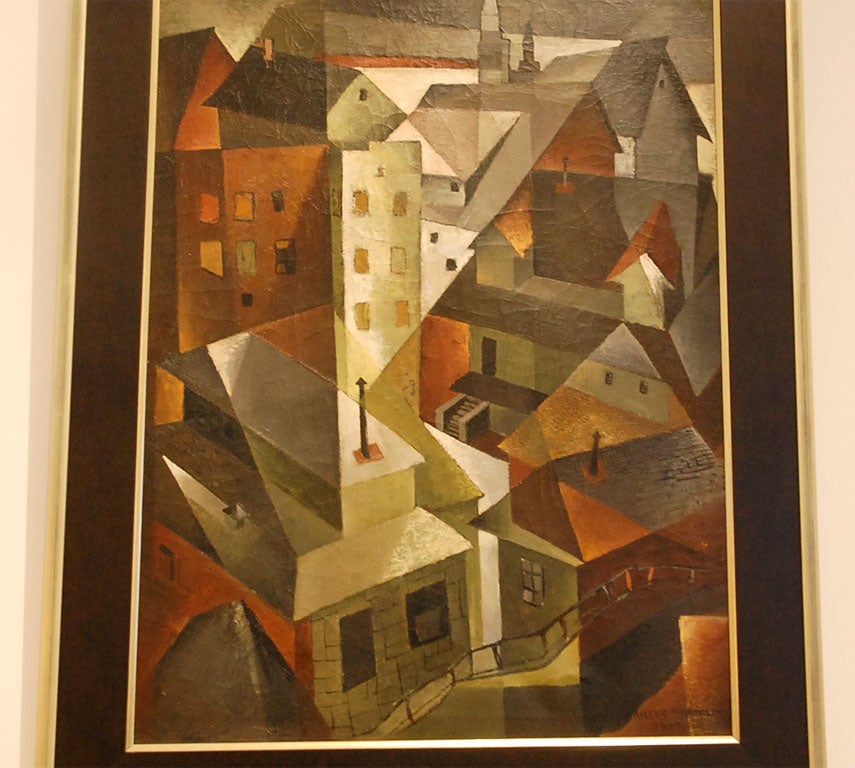

Violin and Candlestick (1910) by Georges Braque Violin and Candlestick by Georges Braque, 1910, SF MoMA It also featured the restricted color palette of Proto-Cubism. It is characterized by the deconstructed representations of objects with contradictory shadows and planes, which play with traditional notions of perspective. Houses at L’Estaque (1908) by Georges Braque Houses at L’Estaque by Georges Braque, 1908, Lille Métropole Museum of Modern, Contemporary or Outsider ArtĪnalytical Cubism in the early phase of Cubism, beginning in 1908 and ending around 1912. The piece is one of the most famous examples of Cubism’s divergence from traditional aesthetics. Below them sits a pile of fruit posed for a still life. Their bodies are angular and disjointed, standing as if they are posing for the viewer. All the figures stand to confront the viewer, with slightly disconcerting facial expressions. The piece is rendered in muted, paneled block colors.

Les Demoiselles d’Avignon depicts five nude women in a brothel in Barcelona. His work was known for its angular shapes and challenging traditional perspectives.

However, he also made significant contributions to other movements including Expressionism and Surrealism. He, along with Georges Braque, founded the Cubism movement in the early 1900s.

Pablo Picasso was a Spanish painter, printmaker, sculptor, and ceramicist who is known as one of the most prolific influences on 20th-century art. Les Demoiselles d’Avignon (1907) by Pablo Picasso Les Demoiselles d’Avignon by Pablo Picasso, 1907, MoMA This period reflects the experimentation and influences that resulted in geometric shapes and a more muted color palette in sharp contrast to the preceding Fauvist and post-impressionis t movements. As Martin writes in his Introduction in Cubism and Fashion, “In the search for a description of or analysis for fashion’s radical transformation, it becomes clear that Cubism possesses both the aesthetic proximity and the worldly diffusion to be not only metaphor but also cause.Proto-Cubism is the introductory phase of Cubism that began in 1906. This volume, accompanying an exhibition at The Costume Institute, provides an unprecedented view of the complete change of the fashion silhouette from three-dimensional and fixed shapes to two-dimensional and ephemeral forms, accompanied by a like shift in materials, which occurred rapidly during the years before World War I. During the teens fashion made its transformation from a full, rounded, static, and exaggerated shell built on the human body to a soft, dynamic cylinder revealing the body and reveling in flatness. Richard Martin, Curator of The Costume Institute, The Metropolitan Museum of Art, argues that the influence of Cubism has been at least as powerful for fashion as it has been for bringing about a new way of seeing in the fine arts. Here their work is shown next to art works by Georges Braque, Robert Delaunay, Juan Gris, Fernand Léger, Pablo Picasso, and other seminal artists of the early twentieth century. Significantly, this book does not extol rudimentary drawings for apparel by Cubist artists, but rather presents a critical study of the most accomplished creations by Poiret, Vionnet, Chanel, and other premier designers who assimilated Cubist principles. This volume, by juxtaposing art and fashion, shows how many of the most glittering and elegant dresses of the teens and twenties benefited from Cubist concepts. Yet, little is known about the relationship between Cubist art and fashion.Ĭubism and Fashion demonstrates for the first time how the fundamental traits of Cubist art were translated into fashion during the critical years from 1908 into the early 1920s and how Cubism has continued to influence designers even to the present. The flat planes, indeterminate space, cylinders, cones, rotation, and use of collage in Cubist art revolutionized painting and sculpture, turning three-dimensional illusionism into abstract concept. Cubism’s essential role in the development of twentieth-century art, specifically through the innovative work of Pablo Picasso, Georges Braque, and others beginning about 1908, has been widely recognized for many years.


 0 kommentar(er)
0 kommentar(er)
